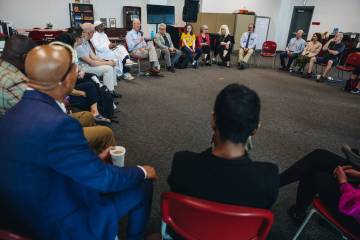Survey: COVID put a dent in Americans’ ability to save for retirement
The COVID-19 crisis has affected the way many Americans are able to save for retirement, with surprising disparities among age groups, gender and even geographic areas.
Nearly 17 percent of Americans say they’re saving less money for retirement due to the pandemic, according to a new survey by The Penny Hoarder, which also found that 16 percent of respondents are saving more money in response to COVID-19. The survey polled 1,001 people in October 2021.
Geographic differences
From a regional standpoint, people in the Northeast were much more likely to save extra money for retirement in response to the pandemic than respondents in other regions, according to The Penny Hoarder’s data. Among Americans who reported saving more, 44 percent live in the Northeast.
The numbers tell a different story in the South. Among those who are saving more due to the pandemic, just 14 percent live in the South, while 31 percent of people saving less are Southerners.
Disruptions in the tourism industry may be causing a slower economic recovery in the South than other parts of the U.S. For example, in Orlando, Florida — where roughly one in five employees worked directly in hospitality and leisure in 2019 — unemployment rates remained much higher than the national average in 2020.
Other economic factors — including a state’s median wages, its unemployment rate and the overall cost of living — impact how much someone can save for retirement in one state versus another. Among people who are saving less due to the pandemic, 35 percent live in the Northeast where living costs are high.
Gender differences
Men were considerably more likely to beef up their retirement savings in response to COVID-19 than women: 59 percent of men are saving more compared to just 41 percent of women.
Pre-pandemic numbers already pointed to a sizable gender gap in retirement savings. A 2019 Bank of America Merrill Lynch Workplace Benefits Report found that women enter retirement with $70,000 less than men.
But the pandemic introduced new challenges for working-age women, especially those with children.
The cost of child care is a significant financial burden for many American families.
A September 2021 survey by The Penny Hoarder of 2,000 parents found that nearly 1 in 5 parents say they had to quit a job due to high child care costs — finding it made more sense to leave the workforce entirely than to pay for daycare or babysitters.
Women were also more likely to work in sectors hardest hit by COVID-19 shutdowns, such as hospitality and retail. Women experienced higher unemployment rates throughout the pandemic than men, according to the Bureau of Labor Statistics.
Since most Americans use employer-sponsored vehicles — such as pensions and 401(k)s — to save for retirement, less workforce participation makes it particularly challenging for women to boost their savings.
Age differences
Millennials were the age group most likely to save more for retirement in response to COVID: 35 percent of Americans who say they’re saving more during COVID are millennials ages 25-34.
Meanwhile, those with the least amount of time until retirement saw the biggest slide. Of the respondents who said they’re saving less, nearly a quarter are GenXers between 45 and 54 — meaning they may have missed some of the post-pandemic market gains. Nearly 28% of people who made no change to their savings were GenXers.
Just 19% of people who amped up their savings due to COVID are in the 45-to-54 age group.
Saving for retirement is critical
Retirement is expensive — and Americans were struggling to save enough money for it long before the pandemic.
The economic turmoil of the pandemic underscored some critical lessons about investing for the long term, including keeping calm during turbulent markets and using market slumps as an opportunity to invest when prices are low.
Americans weren’t all in the same pandemic recession — and The Penny Hoarder’s new data underscores how uneven the recovery has been too.
No matter your age or stage of life, it’s critical to put money away for retirement. If you’re in your 20s, starting to save now will pay huge dividends later. If you’re in your 50s, it’s not too late. Here’s The Penny Hoarder’s comprehensive guide on how to save for retirement at any age.
Methodology: The Penny Hoarder used Google Surveys to conduct a national survey about the impact of COVID on retirement savings. 1,001 people completed the survey between October 5-7, 2021. Survey responses are weighted so that each response is representative of the U.S. population.
Rachel Christian is a certified educator in personal finance and a senior writer for The Penny Hoarder.






















